During my son’s childhood years, there was a daily saga of finding Spencer’s “favorite” shirt in a sea of perfectly good, yet ignored options. Kids have strong opinions about clothes, and sometimes that means perfectly fine garments sit unworn. And we also need to battle those outgrown items, so if you’re feeling overwhelmed, I have just the thing to help you: my free printable kids clothes decluttering guide.
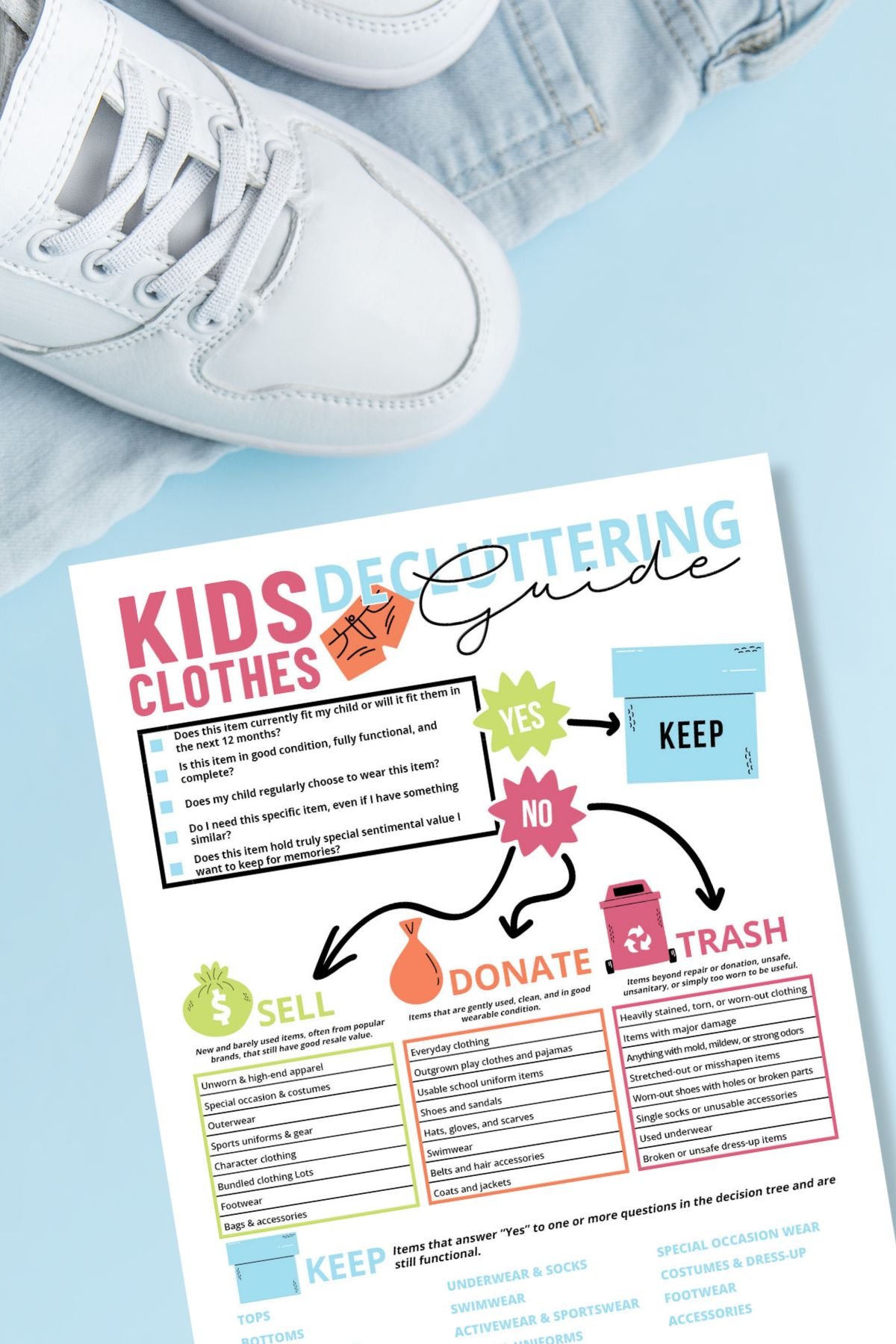
I learned fast to take my son clothes shopping and have him pick up what he liked to avoid having piles of garments he wasn’t interested in. However, that didn’t completely solve the problem of too-full closets.
For a good while, I played a losing game of closet Tetris, attempting to fit more clothes into Spencer’s wardrobe than seemed humanly possible. Even with my efforts to buy him only clothes he liked, there’s still the one thing none of us can change: kids grow fast. Also, they ruin clothes just as quickly.
Those closets need regular purging, at least if you want to keep your sanity intact. I thought there had to be a simpler way of doing this: deciding what to keep and what to let go, then efficiently sort everything for a neat and organized wardrobe.
And that’s how this free printable kids clothes decluttering guide came to life!
👕 Kids Clothes Decluttering Guide
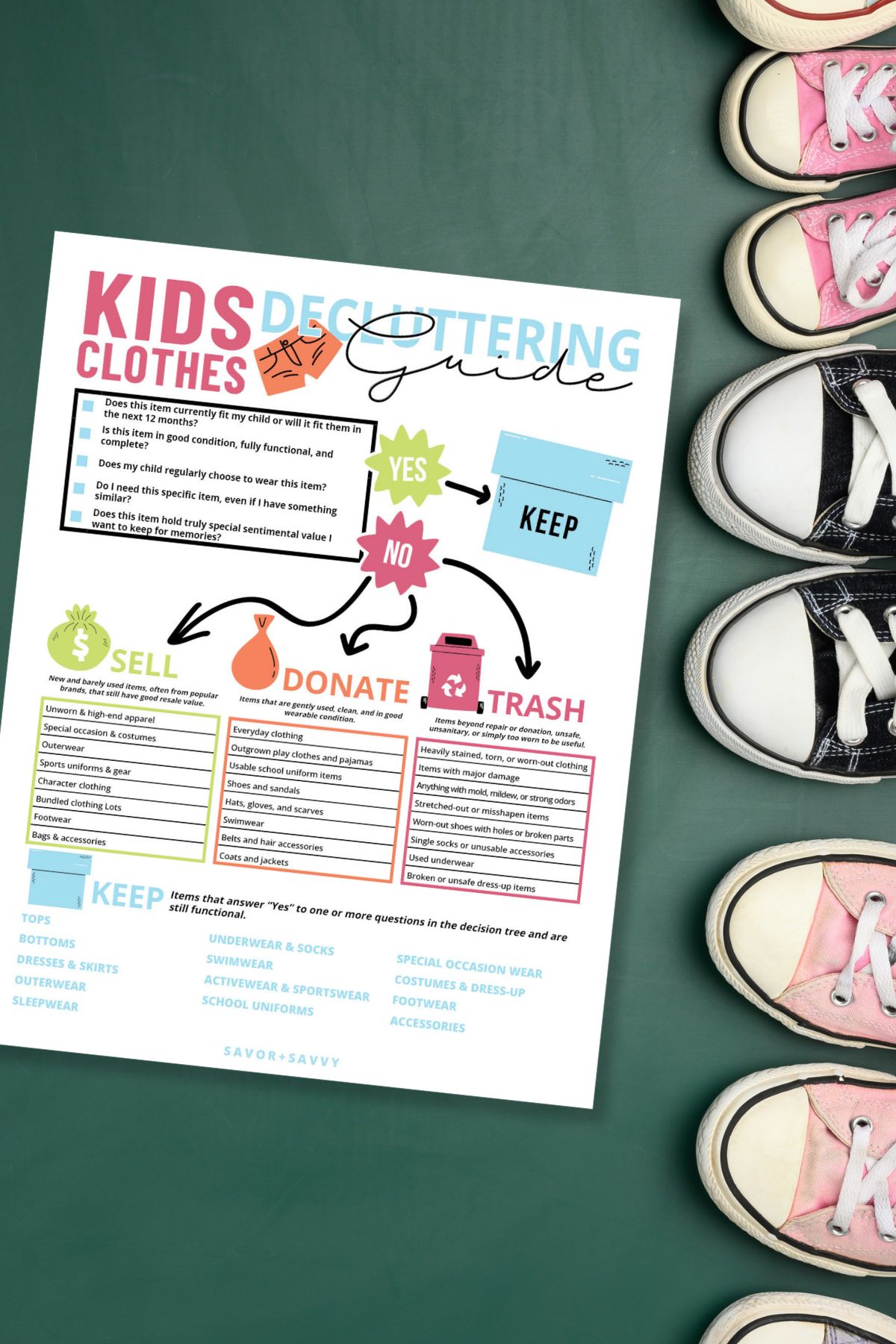
I designed this guide in a way that makes it easy to decide what you do with each item from your child’s wardrobe. No, it won’t do the job for you, but it does make it faster. It’ll also help you organize the items you decide to keep, to avoid the return of the dreaded clutter.
🤔 Decision-Making Questions
For each item you pick up, you will ask yourself a few key questions that’ll let you sort through everything with a clear head.
- Does this item currently fit my child or will it fit them in the next 12 months?
- Is this item in good condition, fully functional, and complete?
- Does my child regularly choose to wear this item?
- Do I need this specific item, even if I have something similar?
- Does this item hold truly special sentimental value I want to keep for memories?
These questions really simplify the process. If an item gets a “Yes” to even one of these, it’s a strong contender for the “Keep” pile.
There’s no magic formula, of course. You know your child and your household best, but these questions will make those decisions surprisingly easy!
💸 The Sell Pile
It’s a pretty common thing for kids to outgrow things before they’re truly worn out. There’s also the seasonal items and gifts they never liked.
That’s what the Sell pile is for – the items that are still in excellent condition or even new, and could actually bring back a few dollars.
🔸Unworn & high-end apparel – This includes clothes that still have tags on, or items from popular, pricier brands that hold their value well, even if gently worn once or twice.
🔸Special occasion & costumes – Think those fancy outfits for holidays or school performances, or detailed dress-up costumes that are still in great shape. They often get minimal wear!
🔸Outerwear – Good quality jackets, raincoats, or winter coats that your child has simply outgrown but are still durable and functional.
🔸Sports uniforms & gear – If uniforms, cleats, or pads are still in excellent condition but no longer fit, they can often be sold to other families whose children are starting out.
🔸Character clothing – Popular character-themed shirts, pajamas, or outfits that are in great shape can be quite sought after by other parents.
🔸Bundled clothing lots – Sometimes, selling a bundle of items from the same size or season can be more appealing to buyers looking for a wardrobe refresh for their child.
🔸Footwear – This covers barely worn shoes, boots, or sneakers, especially if they are from popular brands and still have plenty of life left in them.
🔸Bags & accessories – High-quality backpacks, lunchboxes, or other accessories that are in excellent condition but no longer needed.
🎁 The Donate Pile
Some items are still perfectly usable but not high value enough to be worth selling. That’s your Donate pile! Trust me, so many kids will be happy to receive those items that are gently used, clean, and in good wearable condition.
🔸Everyday clothing – T-shirts, jeans, leggings, and other daily items that are clean and intact but might show minor signs of play.
🔸Outgrown play clothes and pajamas – Perfect for another child who needs comfortable clothes for adventures or bedtime.
🔸Usable school uniform items – If your child has outgrown them but they’re still in good condition, local schools or charities might need them.
🔸Shoes and sandals – Footwear that’s still sturdy and clean, even if well-loved, can be a big help to another family.
🔸Hats, gloves, and scarves – Seasonal accessories that are in good shape.
🔸Swimwear – Gently used swimsuits and trunks.
🔸Belts and hair accessories – Functional accessories that are still usable.
🔸Coats and jackets – Outerwear that isn’t quite “sell” quality but is still warm and protective.
Local shelters, consignment stores, or community organizations are usually thrilled to receive gently used kids’ clothing so check them out before you decide to discard them.
🗑️ The Trash Pile
This is the pile where the items that have lived their life go. These items are beyond repair or donation, unsafe, unsanitary, or simply too worn to be useful. Don’t cling to them; these are the worst kind of closet clutter!
🔸Heavily stained, torn, or worn-out clothing – Clothes with permanent marks, large rips, or fabric that’s just completely worn thin.
🔸Items with major damage – This covers things like broken zippers that can’t be fixed, or significant tears in the fabric beyond simple mending.
🔸Anything with mold, mildew, or strong odors – For health and hygiene reasons, these definitely need to go.
🔸Stretched-out or misshapen items – If clothes no longer hold their shape or fit properly, they’re not useful for anyone.
🔸Worn-out shoes with holes or broken parts – Shoes that are past their prime for comfort or safety.
🔸Single socks or unusable accessories – Those lone socks that never find their mate, or accessories that are broken or too worn to use.
🔸Used underwear – For hygiene reasons, used underwear should always be discarded.
🔸Broken or unsafe dress-up items – Costumes with broken pieces or loose parts that could be unsafe for play.
✨ The Keep Pile
Once you have all the piles figured out, this is the one you need to get back to. The Keep pile will have to go right back into those closets and dressers, and it needs to be in an organized manner.
The practical categories below will help you sort your kids’ clothes so you can always find what you’re looking for without turning the room inside out.
🔸Tops – All those T-shirts, long-sleeved shirts, and blouses.
🔸Bottoms – Pants, jeans, leggings, and shorts.
🔸Dresses & skirts – For those special occasions or everyday wear.
🔸Outerwear – Jackets, coats, and vests.
🔸Sleepwear
🔸Pajamas and robes
🔸Underwear & socks
🔸Swimwear
🔸Activewear & sportswear
🔸School uniforms
🔸Special occasion wear
🔸Costumes & dress-up
🔸Footwear
🔸Accessories – Hats, gloves, scarves, belts, and hair accessories.
Organizing by these categories makes it so much simpler for kids to pick their outfits and, dare I say, even help put them away!
⬇️ Grab It Now
I always make sure our free printables are easy to download and print. You just need a valid email address, a home printer, and to follow these simple steps.
✔️In the box below, enter your name and email, then hit the “Grab It Now” button.
✔️I’ll send you the download link to the PDF file with the free printable kids clothes decluttering guide via email. Just open the message, click the download link and save the PDF to your device.
✔️Then, open the file using a PDF reader app (like the free Adobe Reader).
✔️Go to File-Print. If you’re using U.S. Letter paper, you can just hit the Print button.
✔️For other paper sizes like A4 and A5, you can change the type of paper used from this menu before printing.
📌Tip: This printable guide is one of those highly reusable cheat sheets I like to print on cardstock and laminate. I highly recommend you do the same. It keeps it safe from wear and tear so you don’t have to print over and over again.
💡 Kids Clothes Decluttering Tips
After navigating Spencer’s wardrobe through all his growing phases I picked up a few helpful strategies that make decluttering more efficient and longer-lasting. After all, the ultimate goal isn’t just freeing up closets, it’s also keeping them from exploding again!
👉Involve your little fashion critics – Even young kids can participate! I found giving Spencer a few clear choices (Do you love this blue shirt or the green one more?) made him feel included and made parting with items easier. It also taught him a bit about making choices.
👉Embrace the “seasonal swap-out” routine – As soon as the weather changes, I highly recommend quickly swapping out out-of-season clothes that won’t fit by next year. It keeps closets from becoming a year-round costume party!
👉Have a designated “grow-into” spot – Kids grow quickly, sometimes out-pacing our shopping trips! Keep a labeled bin or section for items that are currently too big but will fit in the coming months. It saves you from buying duplicates later.
👉The play vs. polish divide – Kids need sturdy play clothes for adventures, but also decent clothes for school and outings. Creating separate zones for these different types of wear can make daily choices a lot easier and keep the “good” clothes in better shape.

👉Make labels your silent helpers – Once you’ve sorted everything into categories, clear labeling is a game-changer. My personal go-to for keeping kids’ clothes organized (and just about everything else) is our free printable storage bin labels. I designed them to be truly versatile, and I use them to mark bins by size, season, or type of clothing. You just type in what you need, print, cut, and stick – super easy, and they make finding anything a breeze!
Did a specific piece of clothing spark a great memory (or a funny story) during your decluttering session? Tell me all about it in the comments!
Hi!
Ginny Collins is a passionate foodie and recipe creator of Savor and Savvy and Kitchenlaughter. Indoors she focuses on easy, quick recipes for busy families and kitchen basics. Outdoors, she focuses on backyard grilling and smoking to bring family and friends together. She is a lifelong learner who is always taking cooking classes on her travels overseas and stateside. Her work has been featured on MSN, Parade, Fox News, Yahoo, Cosmopolitan, Elle, and many local news outlets. She lives in Florida where you will find her outside on the water in her kayak, riding her bike on trails, and planning her next overseas adventure.
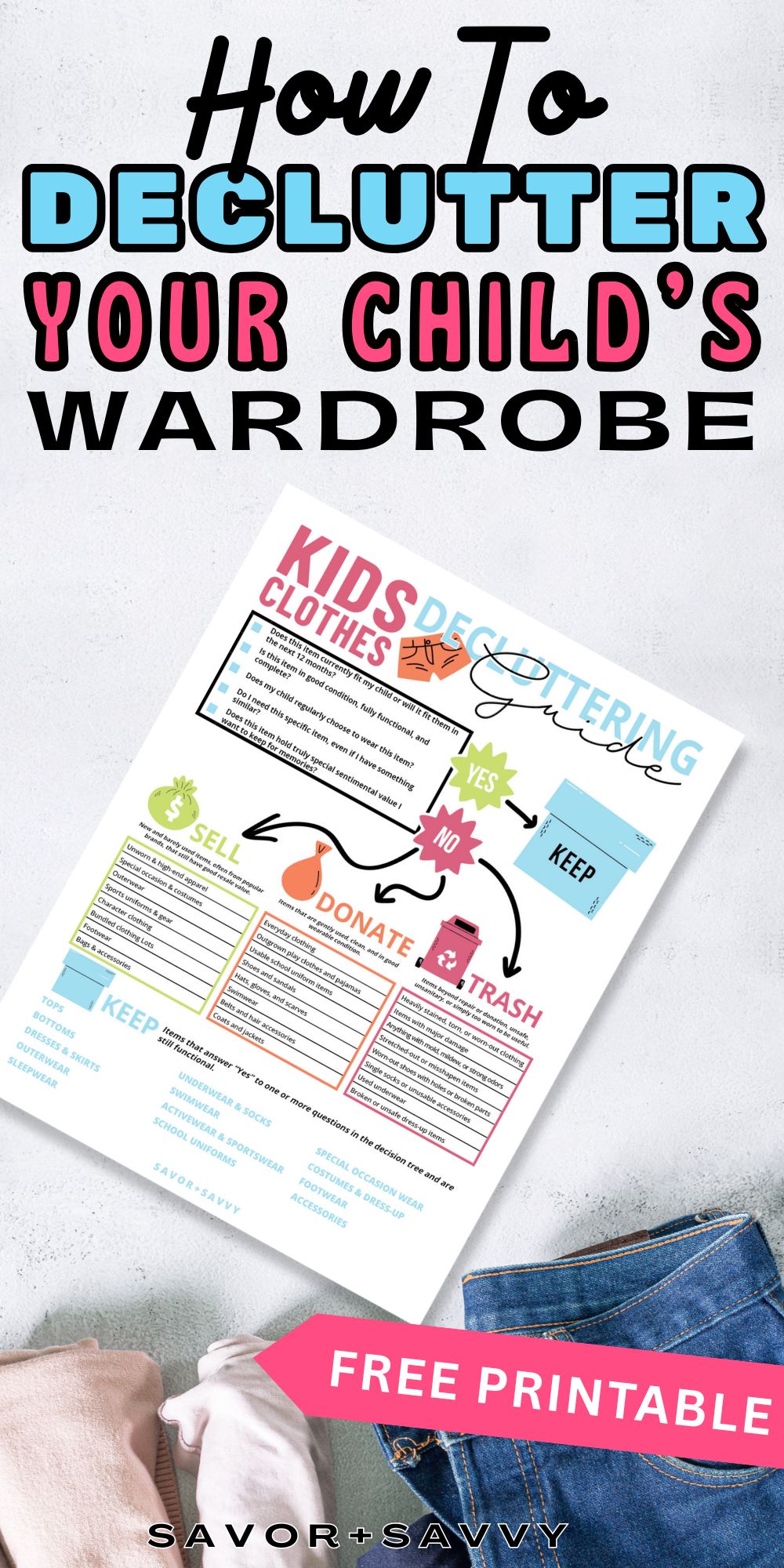
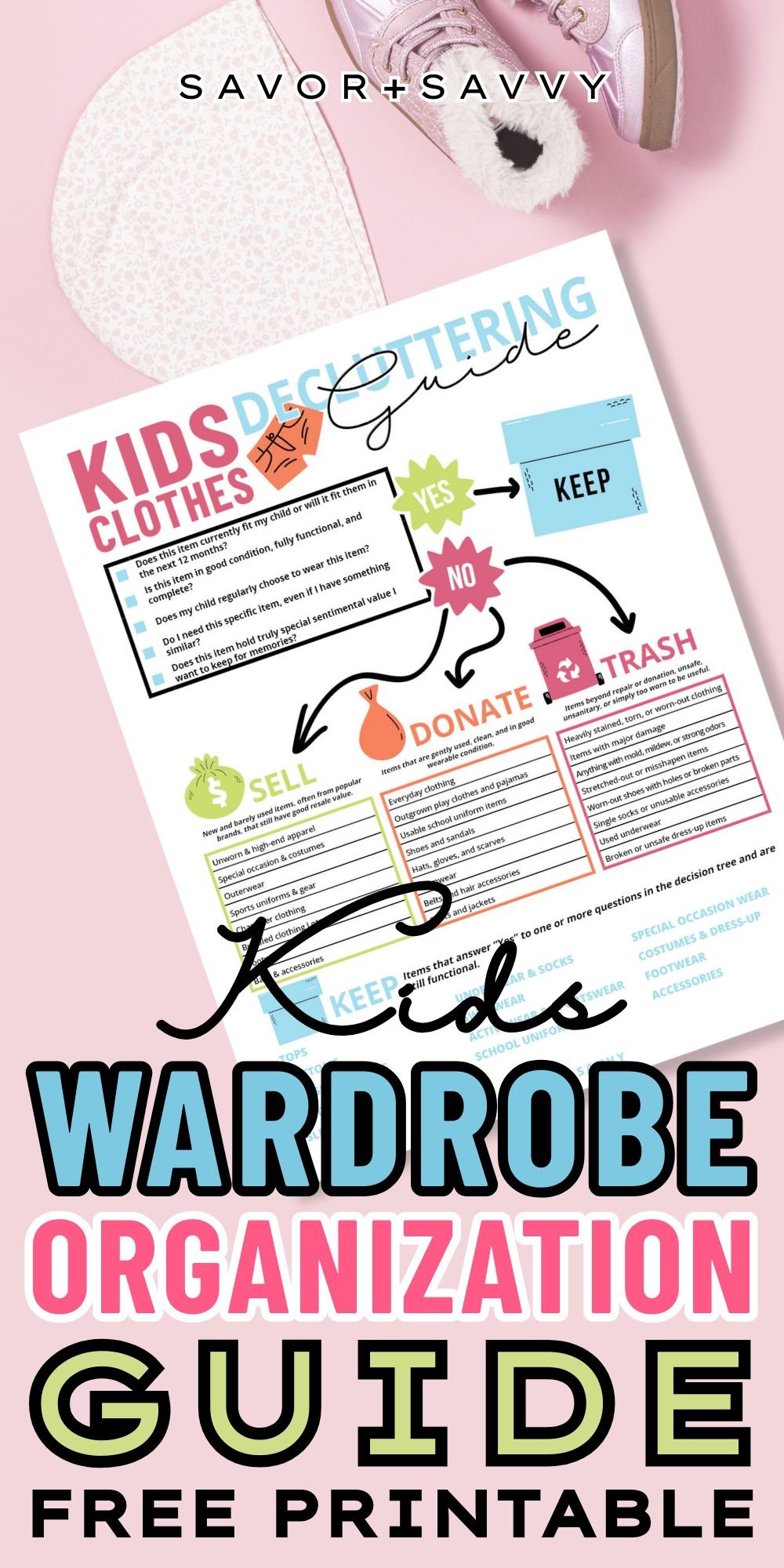
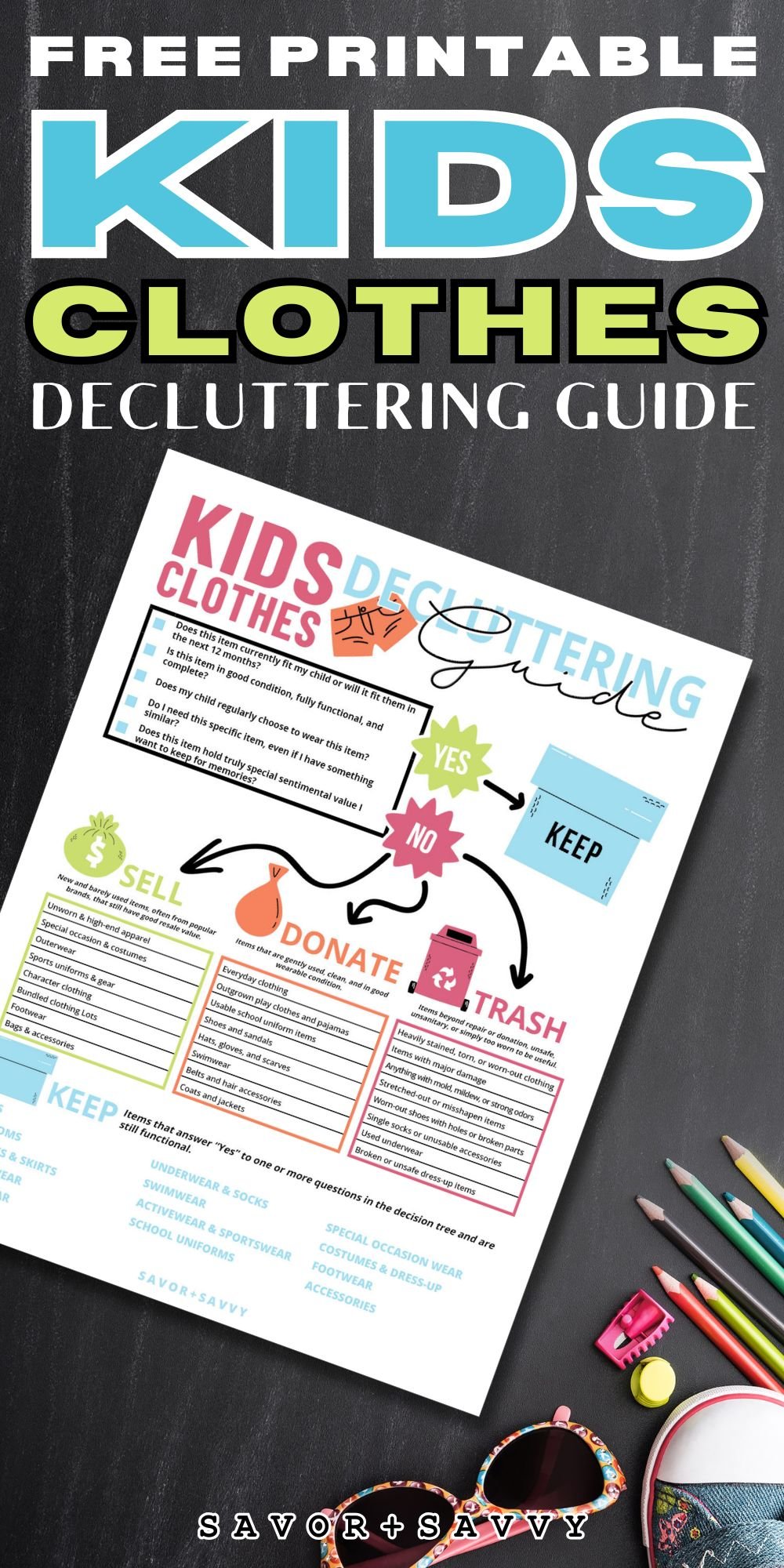


Leave a Reply